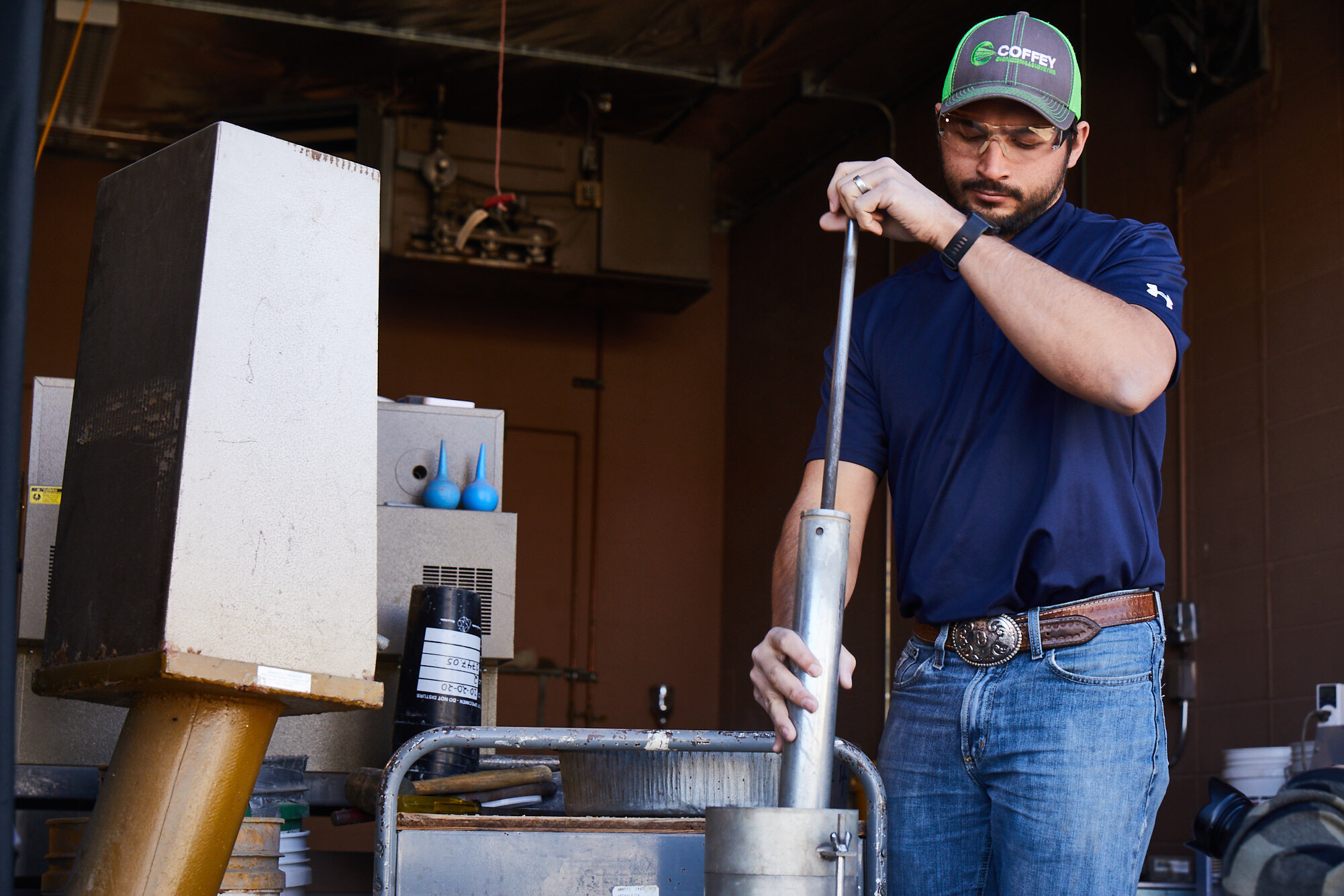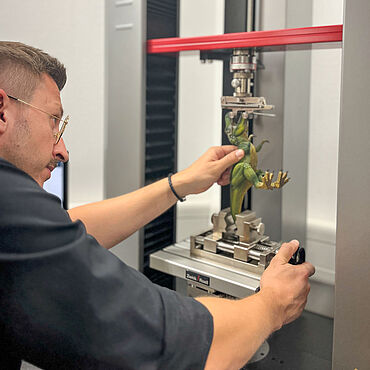Materials Test Lab Solutions: Crafting Assurance in Every Analysis
Wiki Article
Placing Materials to the Test: Checking Out the Function of Products Test Labs
Products test labs play a critical role in ensuring the high quality and integrity of various products utilized in industries such as production, aerospace, and construction. Through a mix of advanced methods and specialized devices, products test labs are able to analyze the properties of metals, polymers, compounds, and other products under numerous conditions and stressors. This post will certainly explore the value of materials testing, the kinds of materials checked, screening techniques and tools used, as well as the applications of materials examination results.Relevance of Materials Testing
Consistently assessing the top quality of products is vital in making sure the stability and safety of items in different industries. Products testing involves subjecting products to different tests and experiments to evaluate their mechanical, physical, and chemical homes.One of the key reasons why products screening is important is the assurance of product top quality. Via extensive screening, manufacturers can identify any type of flaws or weak points in the products used for their products.
By subjecting products to numerous tests, producers can determine their toughness, longevity, and resistance to outside elements such as heat, stress, or chemicals. Whether it is automobile parts, medical devices, or building materials, products testing aids in determining any possible safety threats and establishing ideal actions to alleviate them.
Types of Products Tested
Different kinds of materials are examined in materials test laboratories to assess their mechanical, physical, and chemical homes. These products can include a variety of compounds, including metals, polymers, porcelains, composites, and also natural products such as timber and concrete.Steels are frequently tested as a result of their widespread use in different industries. These examinations assess residential properties such as tensile strength, solidity, and ductility. Polymers, on the various other hand, are evaluated to establish their elasticity, thermal stability, and resistance to chemicals. Ceramics are taken a look at for their brittleness, toughness, and resistance to high temperatures. Compounds, which include two or more different materials, are reviewed to recognize their overall performance, including elements like stamina, durability, and versatility.
Natural materials like timber are evaluated to assess their toughness, wetness content, and resistance to degeneration (materials test lab). Concrete is one more commonly examined material, with examinations concentrating on its compressive strength, durability, and resistance to ecological elements
In enhancement to these materials, products test labs additionally assess finishings, paints, adhesives, and numerous other materials made use of in building and construction, manufacturing, and various other industries. By subjecting these products to strenuous testing, engineers and researchers can collect valuable information to educate material option, design optimization, and top quality control processes.
Checking Techniques and Devices
Examining methods and tools play a critical role in materials examination labs for examining the mechanical, physical, and chemical buildings of various materials. These strategies and equipment are vital in ensuring the quality, dependability, and safety and security of products used in different sectors such as aerospace, automotive, construction, and medical.One frequently made use of screening technique in materials examination labs is mechanical screening, which entails subjecting products to various forces or loads to identify their stamina, firmness, ductility, and various other mechanical properties. This is frequently done utilizing devices such as universal testing makers, which can apply tensile, compressive, and bending pressures to check samplings.
Physical testing techniques are also employed to assess residential or commercial properties such as density, viscosity, thermal conductivity, and electrical conductivity. Tools such as thickness meters, viscometers, thermal conductivity analyzers, and electric conductivity meters are utilized to helpful hints do these tests accurately.
Chemical testing techniques are used to determine the chemical composition and pureness of products. Methods such as chromatography, spectroscopy, and mass spectrometry are typically made use of, along with customized tools created for these functions.

Applications of Products Examination Results
The results of materials examining provide valuable insights into the performance and suitability of different materials for particular applications in different markets - materials test lab. These examination results play a crucial role in determining the quality, sturdiness, and security of materials used in producing processesOne of the key applications of materials examination results remains in the area of building. Engineers and architects rely upon these outcomes to choose proper materials for building frameworks, such as bridges, high-rises, and property buildings. By carrying out tests on products like concrete, steel, and wood, they can make sure that these materials fulfill the called for requirements and can withstand numerous environmental conditions.
In the aerospace sector, products test results are necessary in figuring out the suitability of products for aircraft components. By subjecting products to rigorous screening, engineers can analyze their mechanical residential or commercial properties, resistance to warmth and rust, and capacity to stand up to high-stress conditions. This info is crucial in ensuring the safety and security and reliability of airplane.

Future Patterns in Products Testing
In the realm of materials testing, developments in products testing methodologies are shaping the trajectory of the area, ushering in a brand-new era of technology and precision. As modern technology continues to advance, so does the need for advanced testing strategies and equipment. One future pattern in products testing is the assimilation of synthetic knowledge (AI) and artificial intelligence formulas into testing procedures. These modern technologies have the potential to boost the efficiency and accuracy of examination outcomes by evaluating big quantities of information and identifying patterns that may not be quickly observable by people. In addition, the usage of non-destructive testing techniques is ending up being significantly popular. These methods enable the examination of product buildings without causing damage or modification to the example, making them excellent for testing important or irreplaceable materials. Moreover, there a knockout post is an expanding concentrate on sustainability in products screening. This consists of the advancement of screening techniques that lessen waste and power intake, along with making use of environmentally-friendly products in testing devices. Generally, the future of materials testing is defined by constant development and a commitment to improving accuracy, effectiveness, and sustainability.Verdict
In conclusion, materials testing plays a vital duty in various industries by guaranteeing the high quality, security, and efficiency her comment is here of products utilized in frameworks and items. The results obtained from materials testing are utilized to make educated choices in product layout, option, and manufacturing procedures.Via a mix of sophisticated methods and specific equipment, materials test laboratories are able to analyze the homes of steels, polymers, compounds, and various other products under different conditions and stressors. By performing examinations on materials like steel, concrete, and wood, they can ensure that these products satisfy the needed standards and can hold up against numerous environmental conditions.
In the aerospace sector, products test results are essential in determining the viability of materials for aircraft elements. By evaluating products for their resistance, stamina, and adaptability to effect, manufacturers can pick the most suitable products for different automotive parts, such as body panels, engine parts, and safety and security functions.In the world of materials screening, developments in products evaluating techniques are shaping the trajectory of the area, ushering in a new era of technology and precision.
Report this wiki page